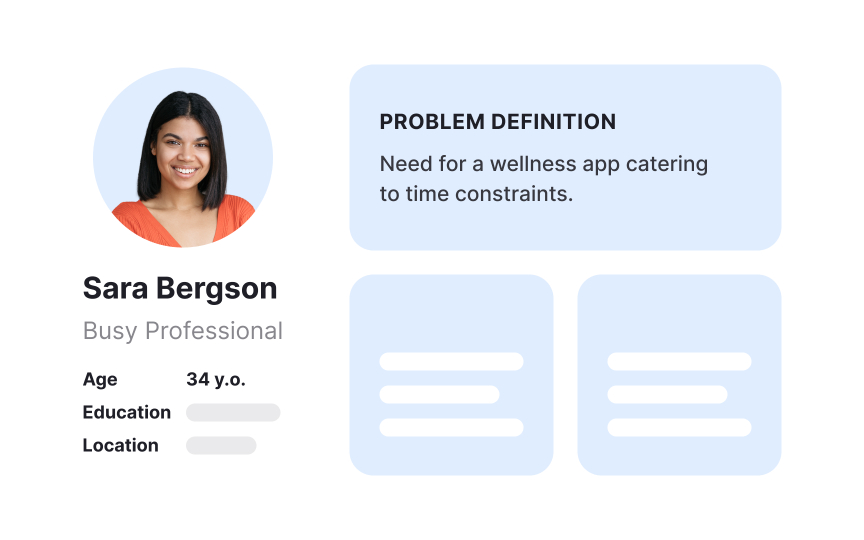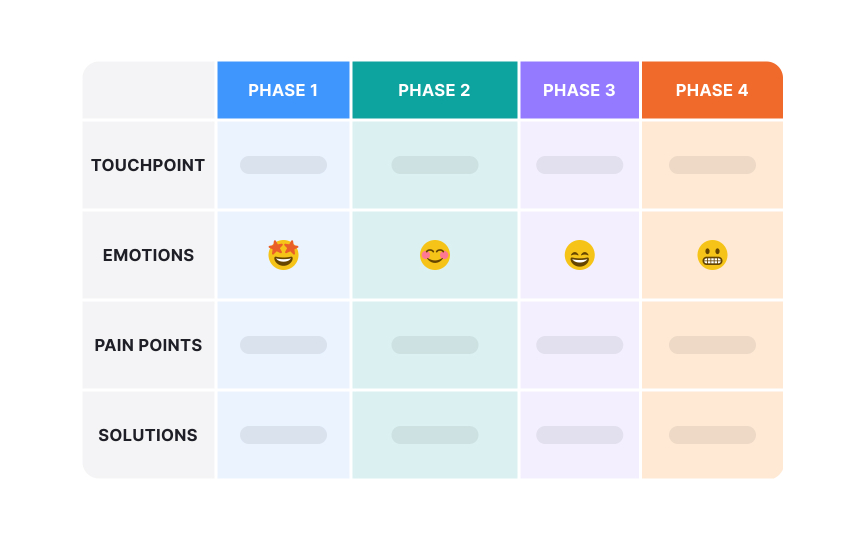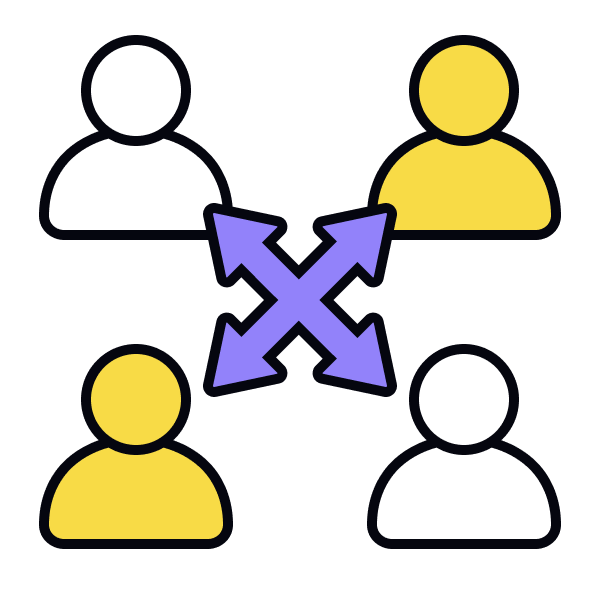User-Centered Design in Product Development
Learn ways to unite cross-functional teams around user needs to build products that deliver genuine value
User-centered design serves as a unifying framework that aligns cross-functional teams around user needs and experiences. Product managers, designers, engineers, researchers, and other team members collaborate to translate user insights into actionable product decisions. This transforms siloed development processes into cohesive user-driven workflows where each team member contributes their expertise through a user-focused lens.
Research insights flow seamlessly between teams, informing technical constraints, design solutions, and product strategy simultaneously. Through shared user understanding, teams make better-informed decisions, reduce development cycles, and eliminate feature bloat. This breaks down traditional departmental barriers, creating a shared language centered on user value.
Cross-functional teams leveraging user-centered methodologies deliver more cohesive products while fostering stronger team alignment and shared ownership of user outcomes. The result is an efficient, collaborative environment where diverse expertise converges to create truly user-focused solutions.
Design thinking transforms how cross-functional teams approach product development. This human-centered framework consists of 5 core phases, where each phase requires unique contributions from designers, developers, researchers, and product managers working in harmony:
1. Empathize: Understand user needs, experiences, and pain points through
2. Define: Synthesize insights to clearly articulate the core problem that needs to be solved.
3. Ideate: Generate a wide range of creative solutions and ideas to address the defined problem.
4. Prototype: Create low to high fidelity representations of potential solutions for testing and feedback.
5. Test: Evaluate prototypes with users to gather feedback and refine and implement solutions iteratively.[1]
This integrated approach leads to solutions that satisfy user needs while meeting technical and business requirements.
Pro Tip: Start each project by creating a shared team charter that outlines how each role will contribute to the design thinking process.
Product teams can employ both qualitative and quantitative research methods to build comprehensive user understanding. Qualitative methods include contextual interviews, usability testing, and field observations — capturing rich behavioral insights. Quantitative approaches involve A/B testing, analytics tracking, and large-scale surveys to validate patterns across user segments. Research synthesis becomes a powerful tool when combining multiple data sources — analytics reveal what users do, interviews explain why they do it, and usability tests show how they interact with solutions.
Effective
Teams can use research repositories and regular synthesis sessions to transform raw data into actionable insights that guide product decisions.
Building personas in cross-functional teams bridges the gap between different departmental perspectives of the user. Each team member shapes the persona through their expertise — designers or researchers explore user behaviors and emotions, developers map technical proficiency and tool usage, while product managers validate market viability and business impact. This collaborative approach ensures personas serve the entire product development process.
Cross-functional teams can use structured workshops to align on persona creation where they identify patterns together, challenge assumptions, and fill knowledge gaps through additional
Successful teams treat personas as decision-making tools rather than static documents.[2] For instance, developers could use them to assess users' technical comfort levels, which helps scope features appropriately. Designers could reference behavioral patterns to create workflows that feel natural and intuitive. Product managers could rely on persona goals and pain points to prioritize roadmap items that solve the most pressing user problems.
A journey map visualizes every step a user takes while interacting with your product or service over time. Think of it as a storyline that captures what users do, think, and feel throughout their experience — from discovering your product to achieving their goals. Each interaction point, emotional response, and potential obstacle gets documented on a timeline, creating a comprehensive view of the user experience.[3]
Journey mapping can be used to show how each team's work impacts the overall user experience. For example, designers track interface interactions and user emotions, developers monitor system responses and performance metrics, while product managers measure business outcomes at each stage. This shared visualization exposes where different team responsibilities intersect and impact each other.
Teams should also leverage journey maps to identify improvement opportunities together. For instance, a slow-loading feature might connect to infrastructure limitations, poor conversion rates might stem from confusing interfaces, or support tickets might reveal gaps in feature discoverability. By mapping these connections, teams can move from fixing isolated issues to solving root causes that span multiple departments.
Pro Tip: Start journey mapping with real user stories from customer support or user interviews — this grounds the exercise in actual experiences.
Problem framing transforms vague user feedback into actionable product challenges that resonate across departments. Instead of jumping to solutions, teams must collaborate to define the core problem from multiple angles. The process starts with gathering evidence from multiple sources — user research data, technical
Clear problem framing leads to better solution exploration. Write problem statements that connect user needs, technical constraints, and business goals. For example, "How might we help users [user need] while considering [technical limitation] and [business objective]?"
When teams understand both the user impact and technical constraints, they can propose solutions that are desirable, feasible, and viable. Regular problem statement reviews help stay focused on solving the right challenges rather than chasing assumptions or personal preferences.
Effective ideation brings together diverse perspectives from across the team to generate innovative solutions. Traditional brainstorming by just one team (often the design team) often produces ideas that are either technically unfeasible or misaligned with business goals. Cross-functional teams, on the other hand, use structured ideation frameworks to maintain the balance between creativity and constraints. The process begins with clear problem statements and constraints shared by each department. Then, using techniques like roleplaying, mind mapping, and SCAMPER can help teams build on each other's ideas while considering implementation realities.
Successful ideation sessions produce solutions that excite all team members. For instance, designers see opportunities for delightful user experiences, developers identify technically elegant approaches, and product managers recognize business potential. Teams should evaluate ideas through all 3 lenses before moving concepts forward into
Unlike traditional design-only prototypes, collaborative prototyping considers technical architecture,
Teams need to choose prototyping fidelity based on specific validation goals:
- Low-fidelity prototypes like paper sketches test basic user flows and technical concepts quickly.
- Medium-fidelity wireframes explore system architecture and user
interactions . - High-fidelity prototypes validate complete experiences while testing technical performance and business metrics.
Rapid
Cross-functional testing transforms validation from a simple
Before testing, create a shared testing scorecard that tracks key metrics such as user task completion time (
Keep in mind that collaborative analysis of testing sessions helps connect different types of findings. For instance, user confusion might point to a technical constraint, or a performance issue might impact business metrics. Use these insights to create and prioritize holistic development and improvement plans that meet user needs. Run regular analytics and
References
- Design Thinking | ProductPlan
- Personas: Study Guide | Nielsen Norman Group
- Journey Mapping 101 | Nielsen Norman Group
Topics
From Course
Share
Similar lessons

Continuous Discovery Mindset

Business Outcomes vs. Product Outcomes





















